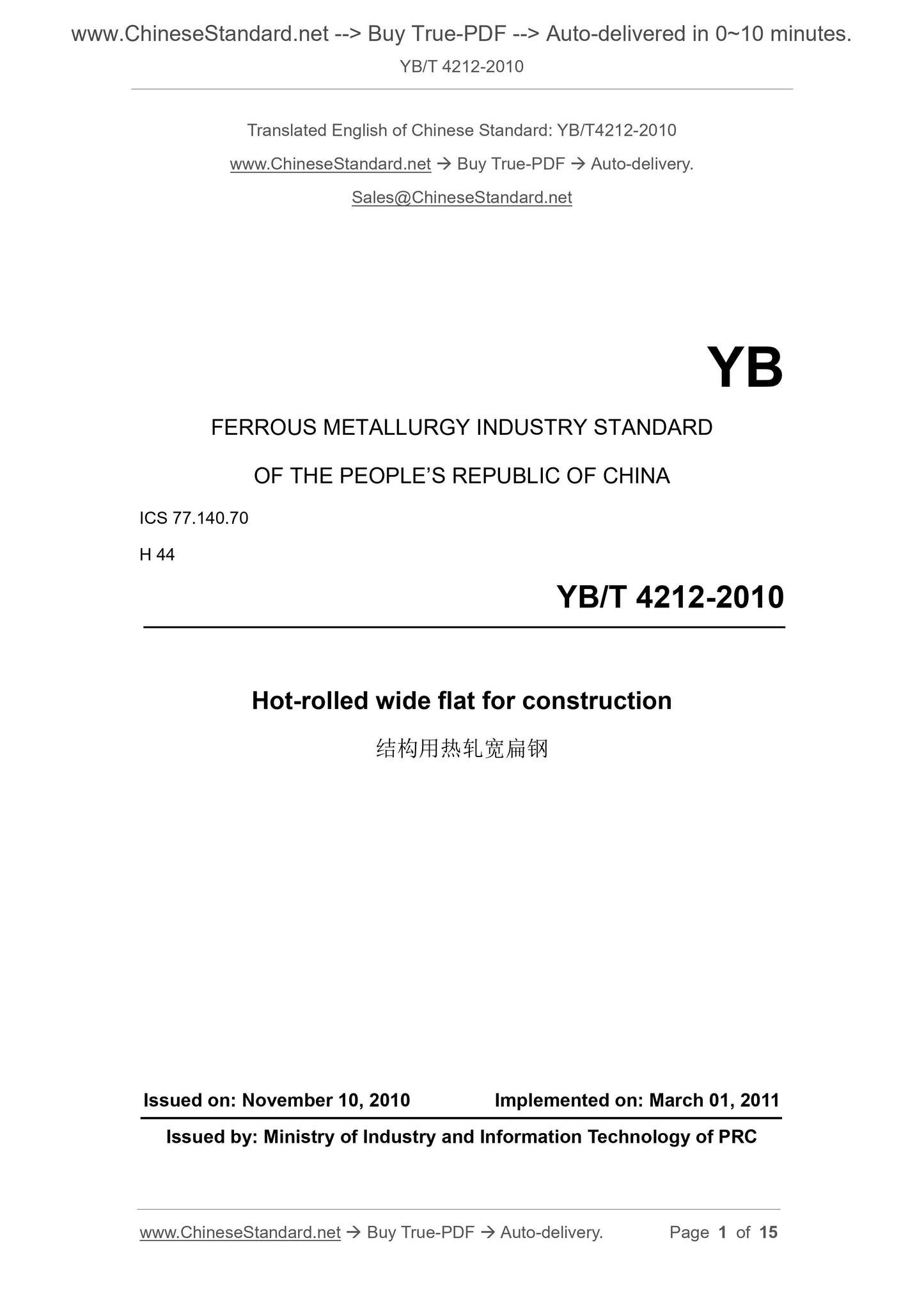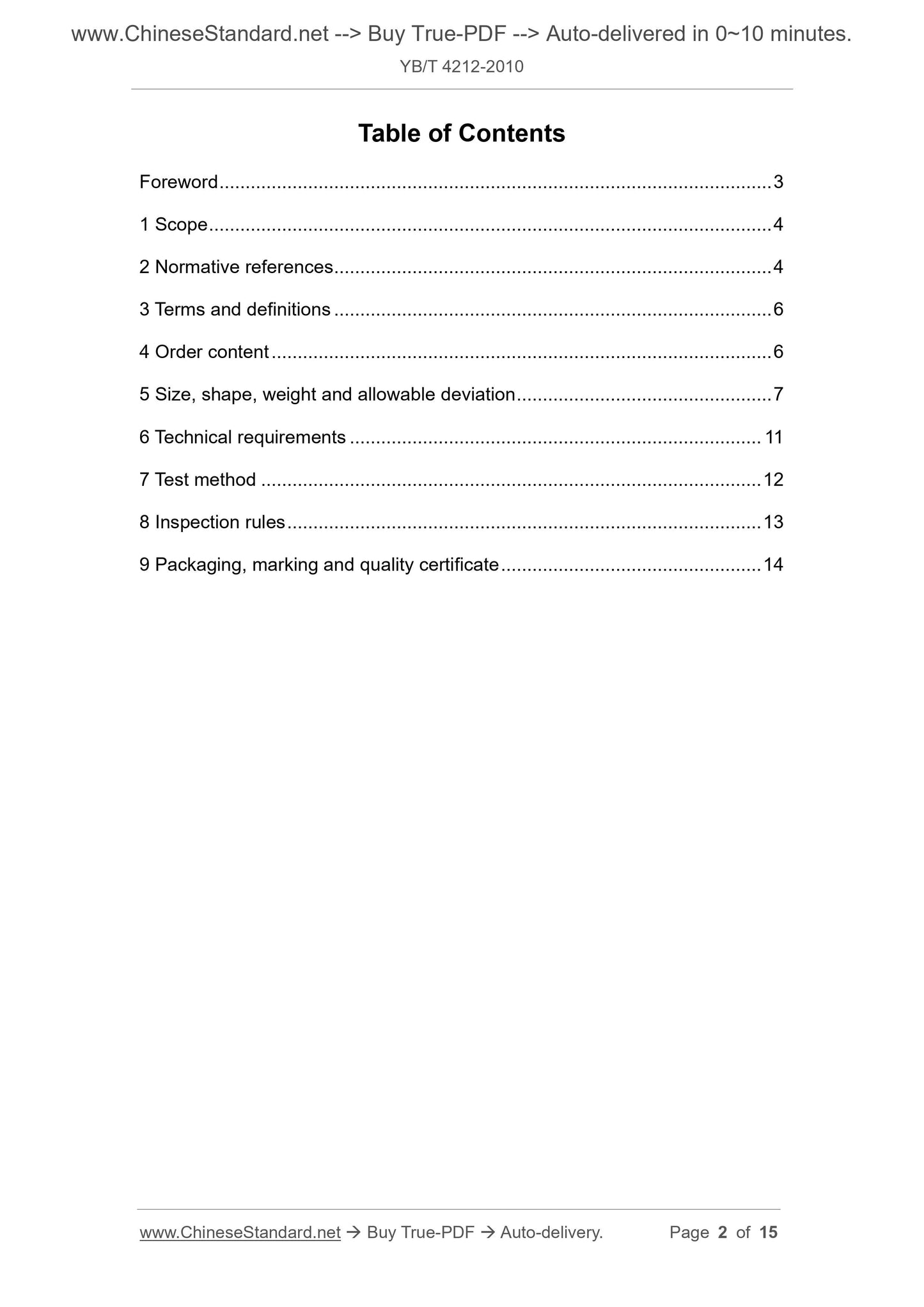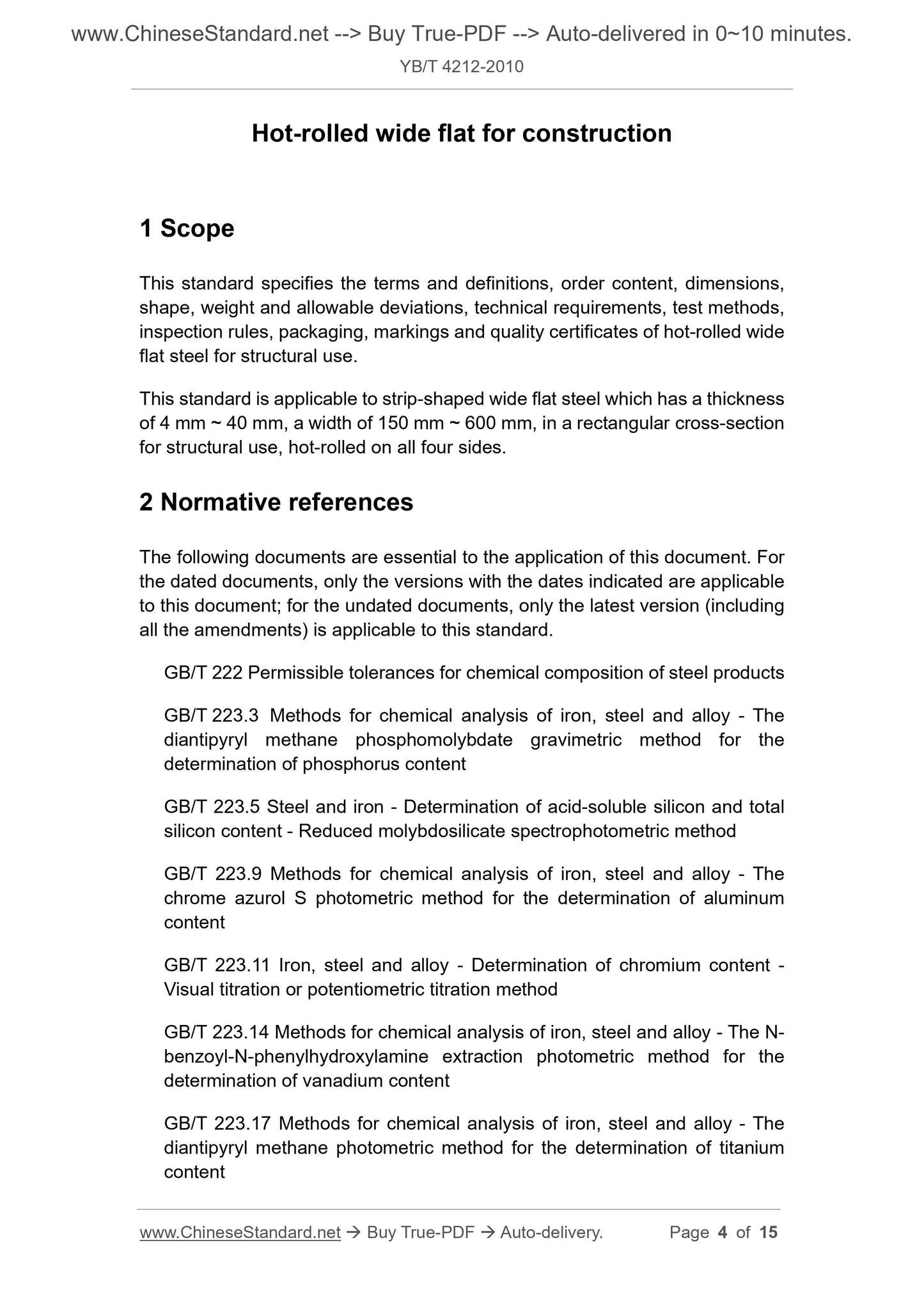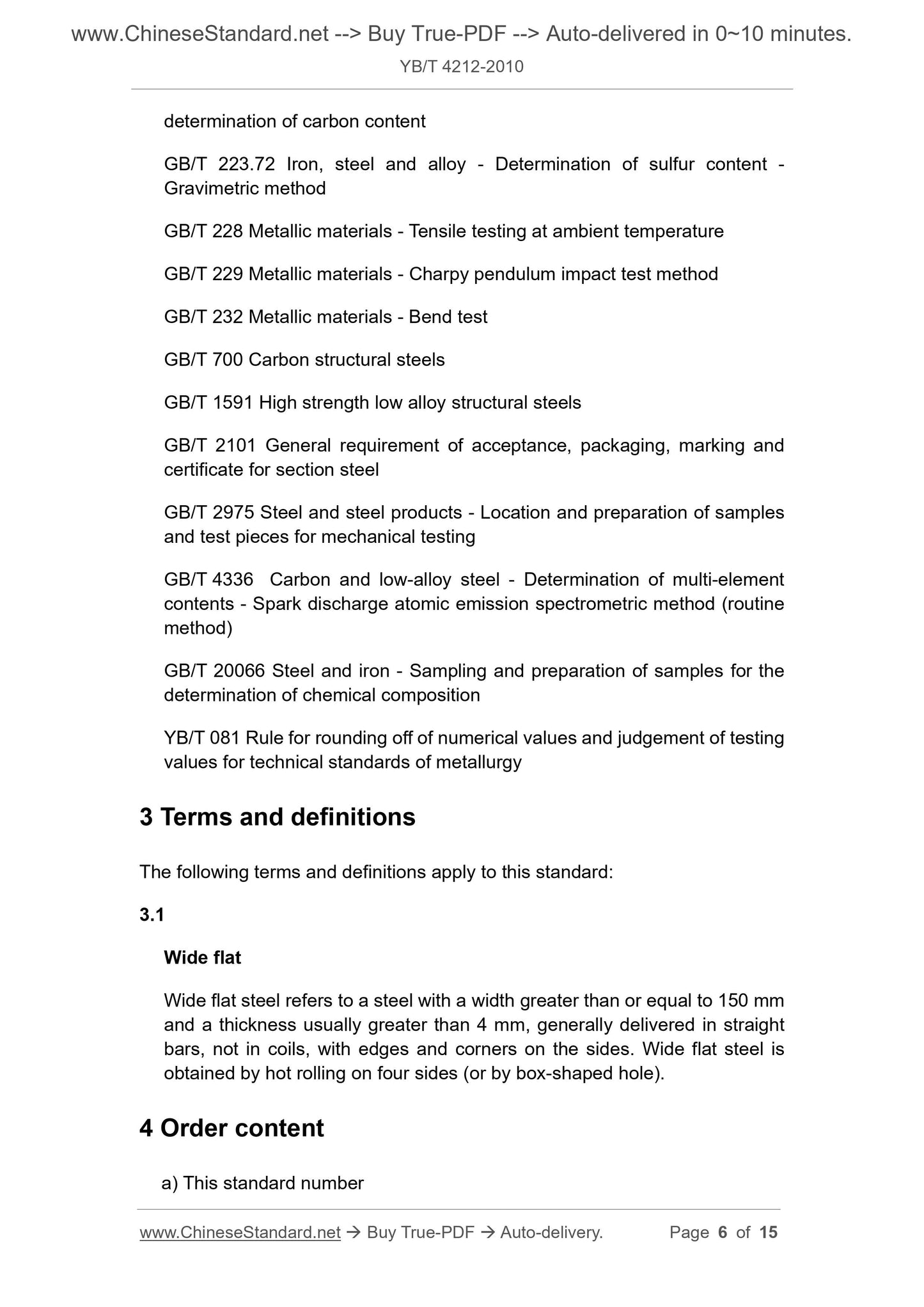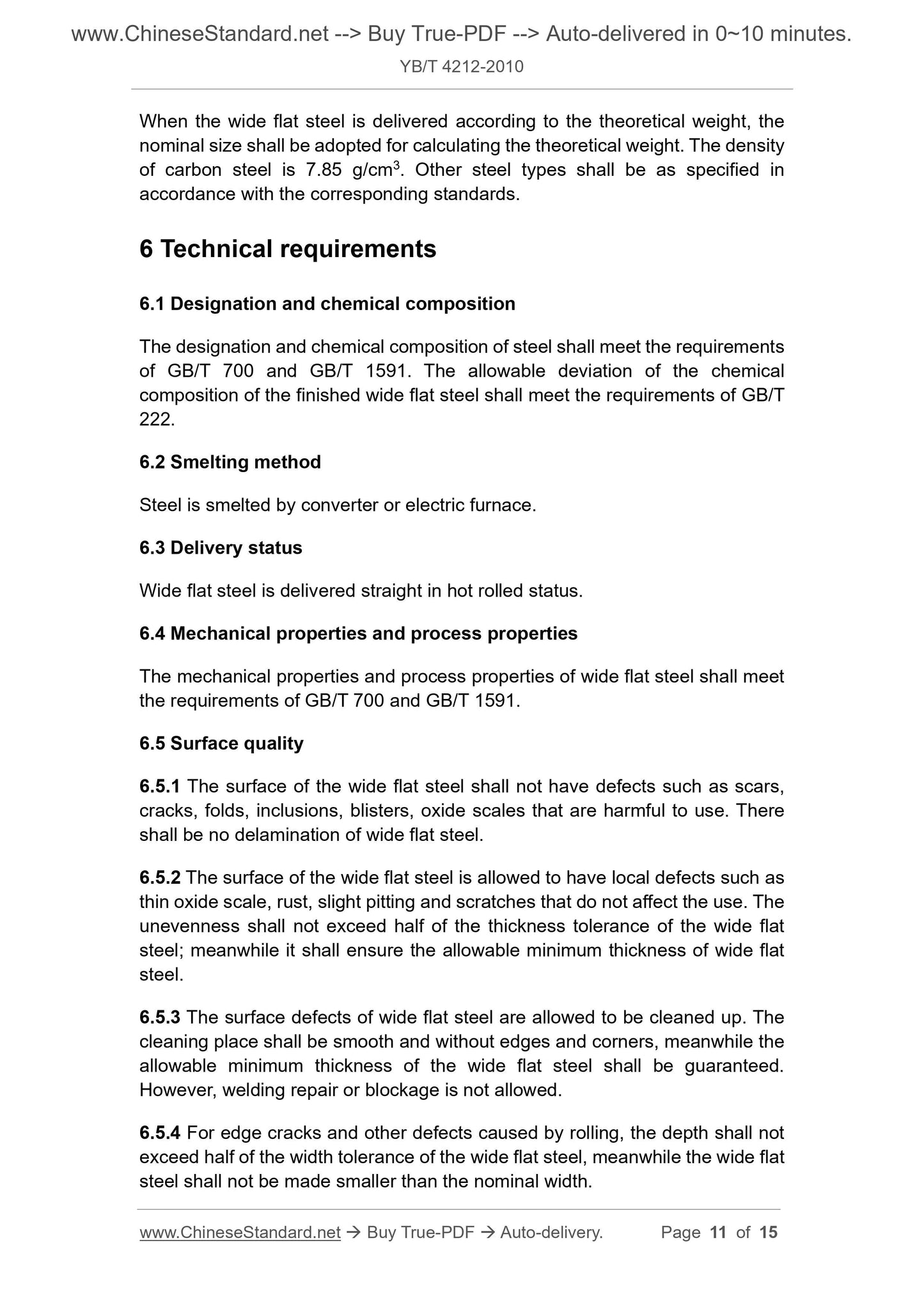1
/
of
5
www.ChineseStandard.us -- Field Test Asia Pte. Ltd.
YB/T 4212-2010 English PDF (YB/T4212-2010)
YB/T 4212-2010 English PDF (YB/T4212-2010)
Regular price
$205.00
Regular price
Sale price
$205.00
Unit price
/
per
Shipping calculated at checkout.
Couldn't load pickup availability
YB/T 4212-2010: Hot-rolled wide flat for construction
Delivery: 9 seconds. Download (and Email) true-PDF + Invoice.Get Quotation: Click YB/T 4212-2010 (Self-service in 1-minute)
Newer / historical versions: YB/T 4212-2010
Preview True-PDF
Scope
This standard specifies the terms and definitions, order content, dimensions,shape, weight and allowable deviations, technical requirements, test methods,
inspection rules, packaging, markings and quality certificates of hot-rolled wide
flat steel for structural use.
This standard is applicable to strip-shaped wide flat steel which has a thickness
of 4 mm ~ 40 mm, a width of 150 mm ~ 600 mm, in a rectangular cross-section
for structural use, hot-rolled on all four sides.
Basic Data
| Standard ID | YB/T 4212-2010 (YB/T4212-2010) |
| Description (Translated English) | Hot-rolled wide flat for construction |
| Sector / Industry | Ferrous Metallurgy Industry Standard (Recommended) |
| Classification of Chinese Standard | H44 |
| Classification of International Standard | 77.140.70 |
| Word Count Estimation | 10,189 |
| Date of Issue | 2010-11-10 |
| Date of Implementation | 2011-03-01 |
| Quoted Standard | GB/T 222; GB/T 223.3; GB/T 223.5; GB/T 223.9; GB/T 223.11; GB/T 223.14; GB/T 223.17; GB/T 223.18; GB/T 223.19; GB/T 223.23; GB/T 223.32; GB/T 223.37; GB/T 223.40; GB/T 223.58; GB/T 223.59; GB/T 223.60; GB/T 223.63; GB/T 223.64; GB/T 223.68; GB/T 223.71; GB/T 223.72; GB/T 228; GB/T 229; GB/T 232; GB/T 700; GB/T 1591; GB/T 2101; GB/T 2975; GB/T 4336; GB/T 20066; YB/T 081 |
| Regulation (derived from) | MIIT (2010) No. 126 |
| Issuing agency(ies) | Ministry of Industry and Information Technology |
| Summary | This standard specifies the structure of hot-rolled wide flats with the terms and definitions, ordering the contents, size, shape, weight and tolerances, technical requirements, test methods, inspection rules, packaging, marking and quality certification, etc. This standard applies to structures with a thickness 4mm ~ 40mm, width 150mm ~ 600mm, rectangular cross-section, the four sides of the hot-rolled wide strip steel. |
Share
